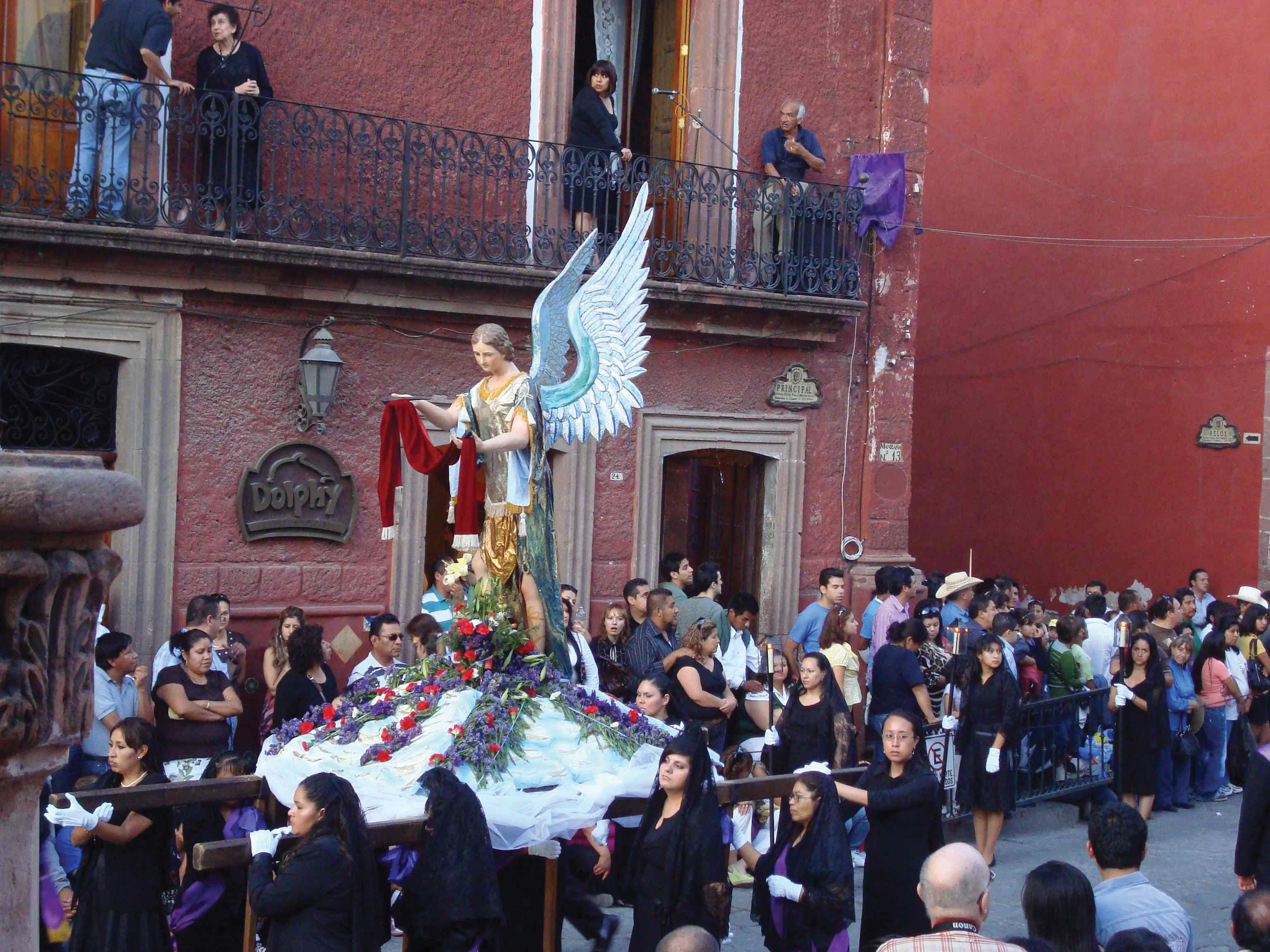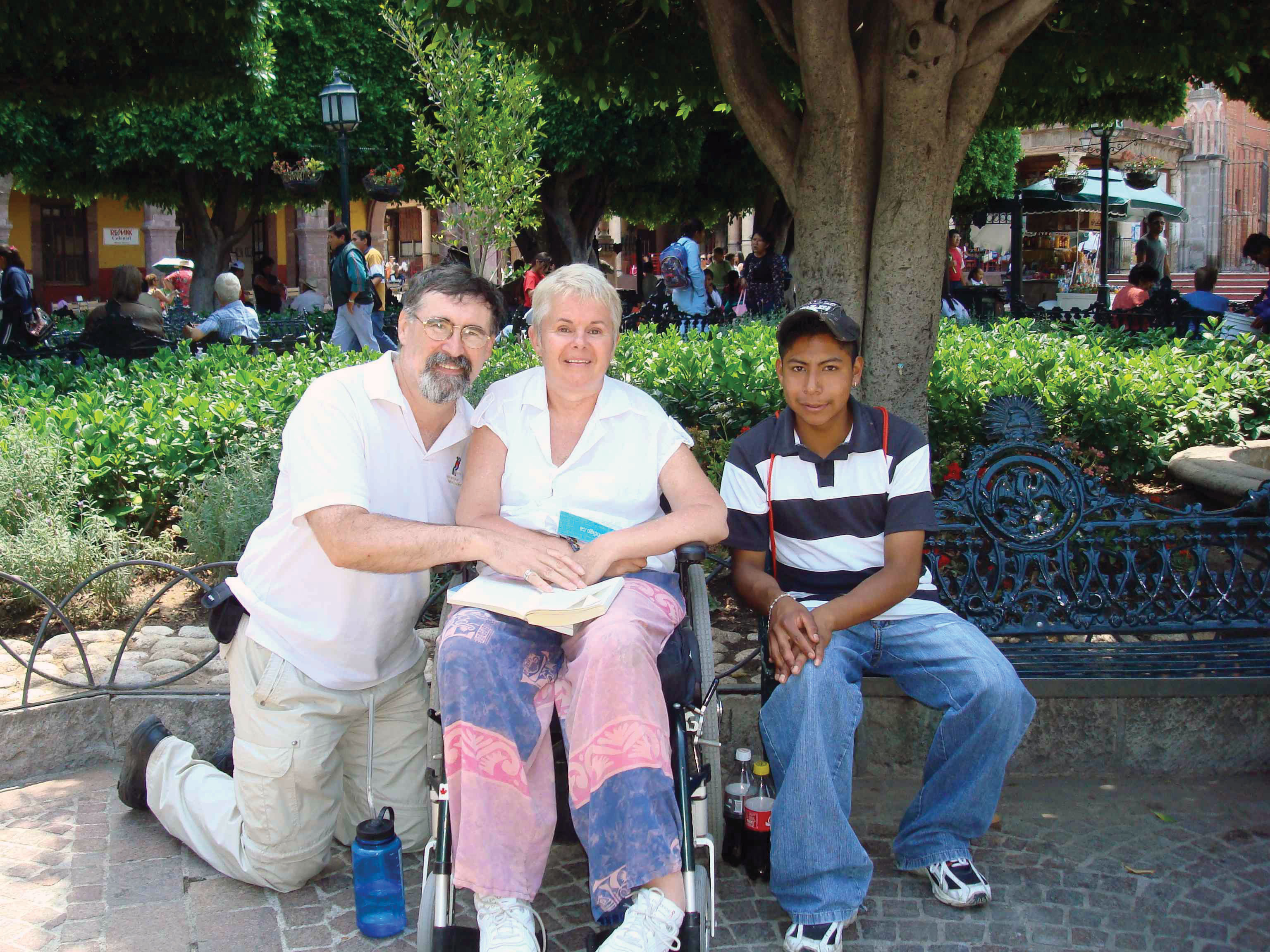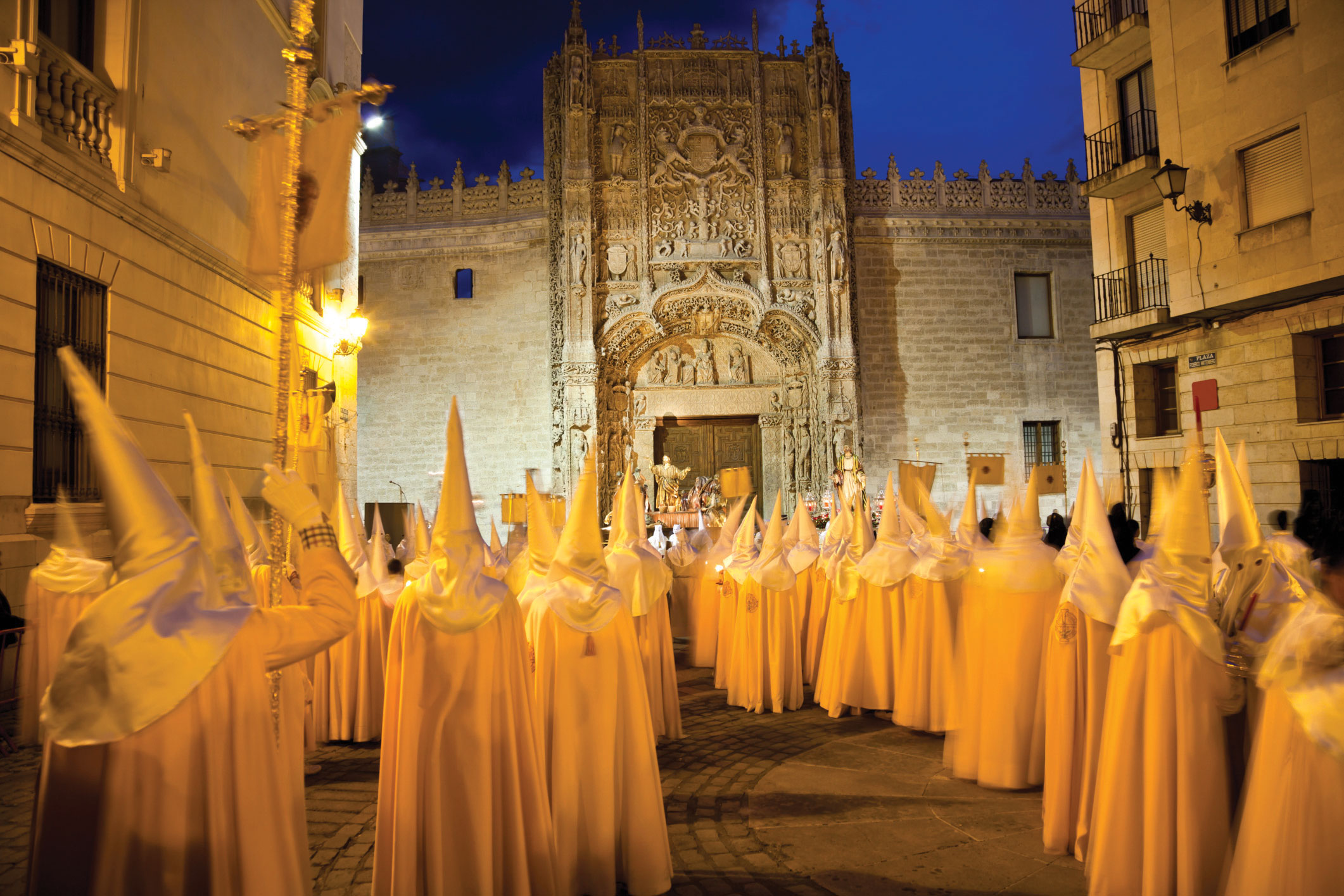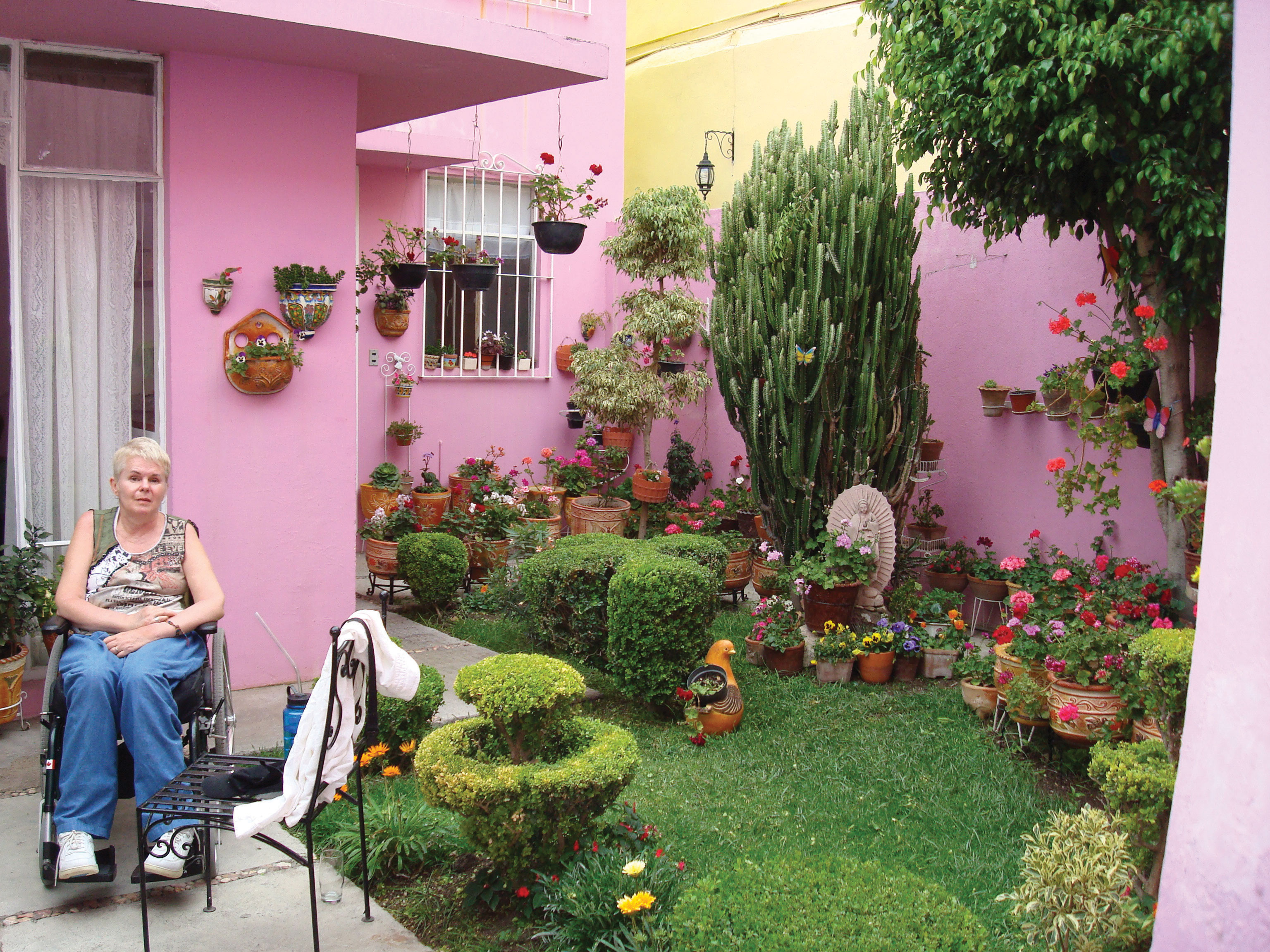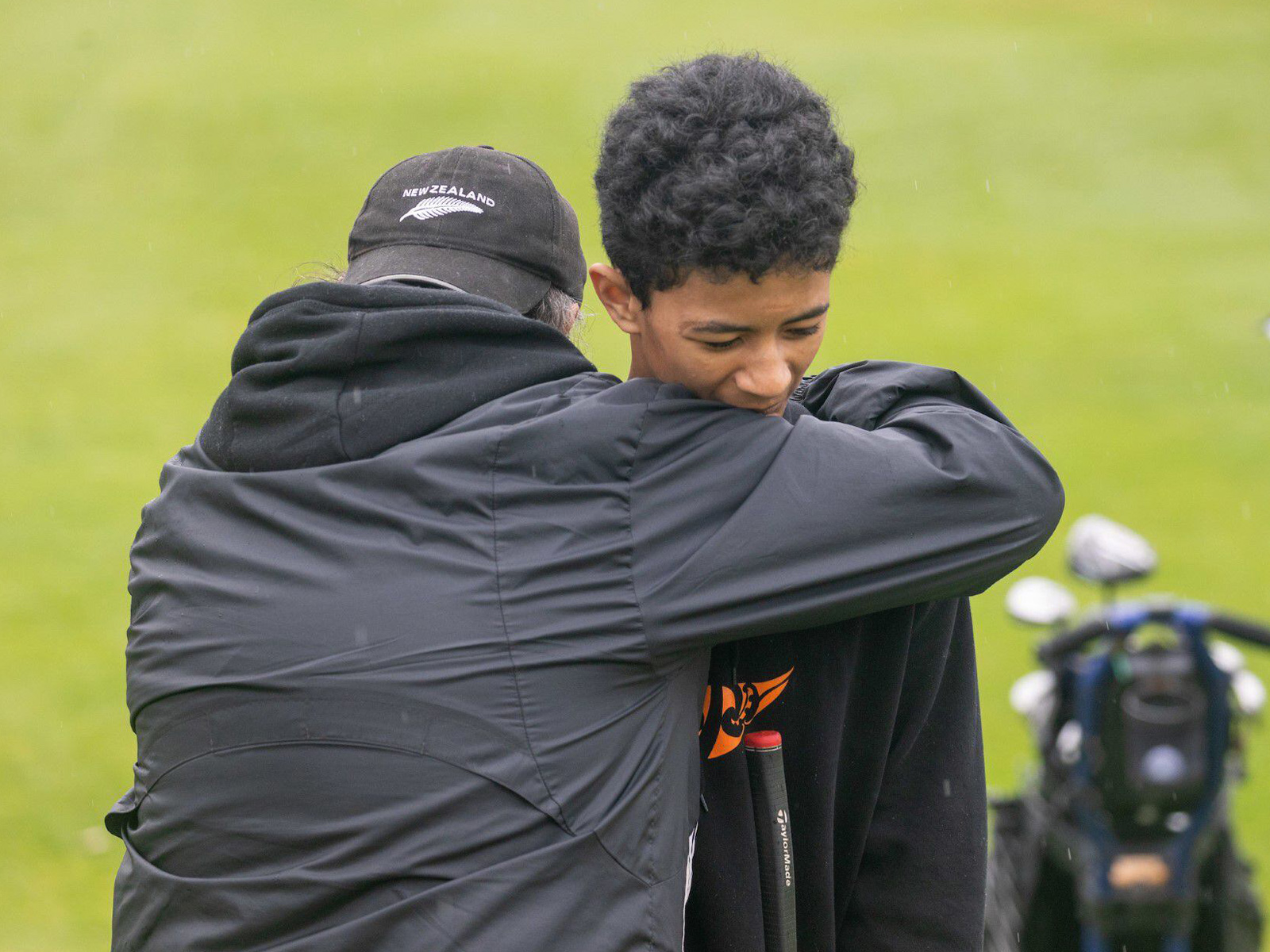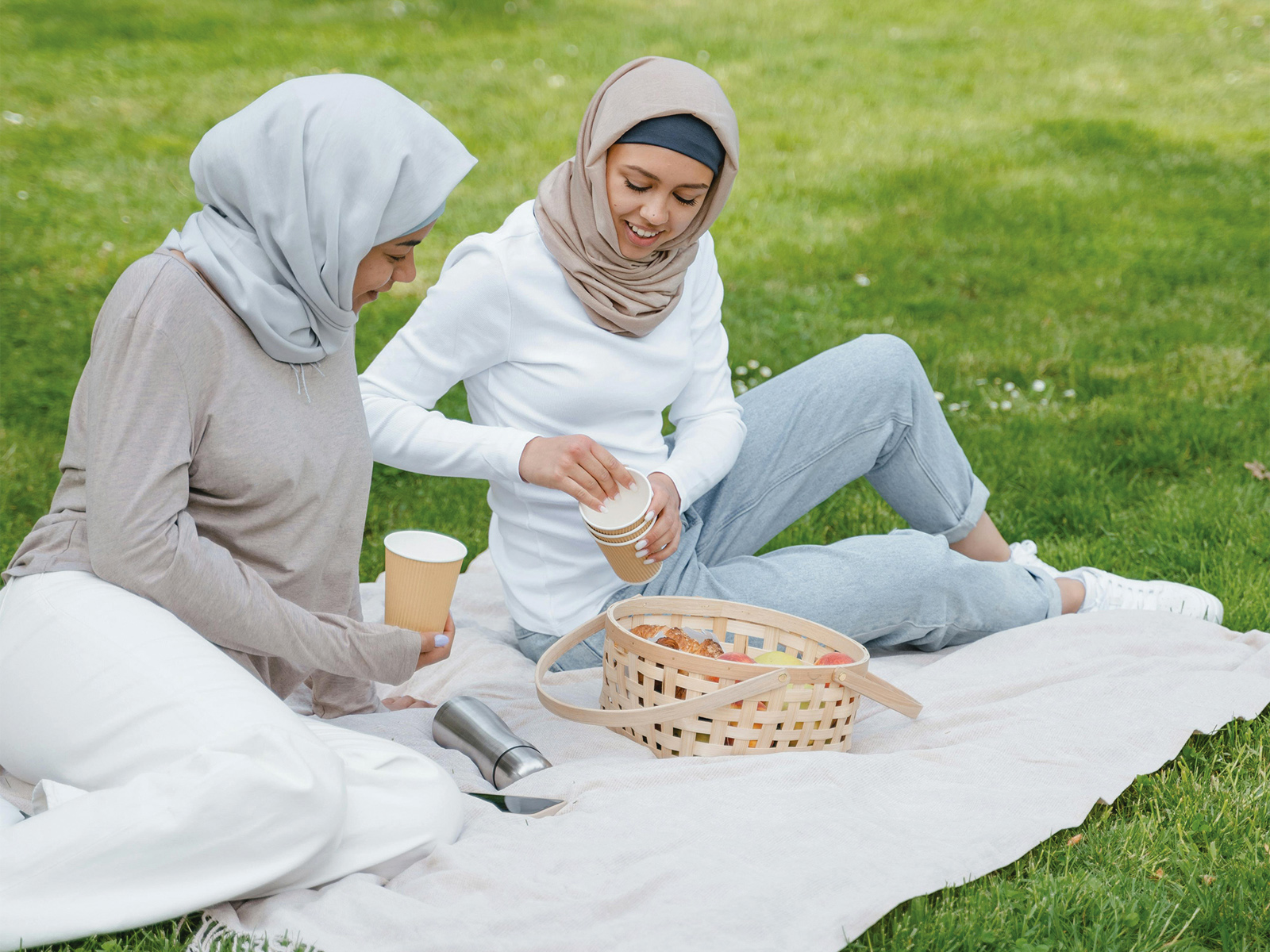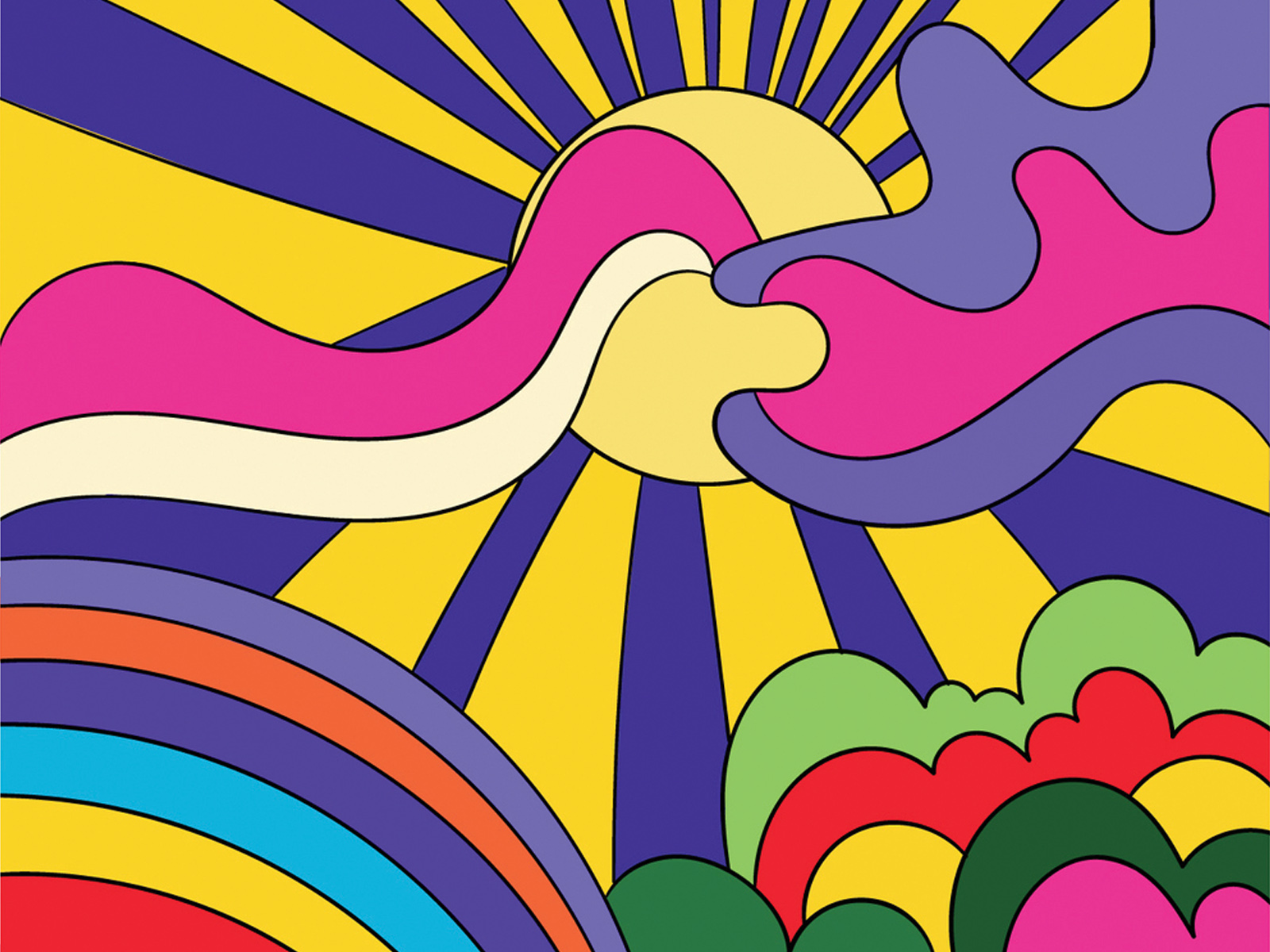A Bumpy Blessing for Wheelchair Users
In San Miguel, Mexico.
By Lynn Atkinson-Boutette
“HECTOR will push you around for $15 a day,” said our B&B hostess, Maricela. “He doesn’t speak English, but if he manages to keep you on the narrow sidewalk and cobblestone streets, I’m sure you’ll do fine.” And our vacation was just that—in fact, it was more than fine.
Our two weeks at the beginning of April were quite memorable. Far from the troubled drug wars of northern Mexico, this Spanish colonial town is a mountain oasis inhabited by artists and a large expat community. San Miguel, 4 1/2 hours from Mexico City, or 11/2 from Leon, is very affordable—and with someone to push the wheelchair, it’s definitely doable. Best of all, unlike other Mexican towns, the food and water are safe to eat and drink, which is very important for me since I have multiple sclerosis.
IT’S MOLE DE OLLA
I was wary at first of eating salads, fruits or iced drinks. But our friend convinced us that while eating from street vendors may not be safe for western stomachs, restaurants in San Miguel are noted for their cleanliness. Within a few days, I had no problems eating various Mexican delicacies. At El Pegaso, just off the main square, I was introduced to Chiles en Nogada, a classic Mexican dish, plus excellent casual fare such as soups and salads. Restaurant walls, filled with folk-art box niches, are by turn, poignant and hilarious. At Casa Maricela B&B, we got to try other Mexican dishes, including enchiladas served with mole (from the Aztec word molli): It’s a rich sauce, served with chicken or turkey, that contains more than 25 ingredients, the most famous of which are chocolate and chiles. Chocolate contributes to the richness of the sauce without adding sweetness; sometimes, grated avocado seed is used to add a balancing bitterness.
San Miguel itself appears as a garden surrounded by walls, unlike a European hill town, and is remarkably beautiful. Behind the wooden doors lining the streets are lush gardens and fountains. The fully bloomed, purple and blue jacaranda trees and vibrant pink bougainvillea were a balm to my soul, as were the colourful handicrafts in the shops. Hector and my husband, Leo, were at the mercy of my winter blahs. We stopped at every shop filled with ceramica (made in the nearby town of Dolores Hidalgo), silver jewellery, tapestries, woven baskets and Mexican clothes. This colonial town, declared a UNESCO world heritage site in 2008, still retains its 16th-century flavour (It’s so popular that the locals complain about Americans driving up housing prices).
WELCOME TO THE MIDDLE AGES
We arrived in the middle of Semana Santa (Holy Week), which is celebrated throughout Mexico but particularly in San Miguel. After unexpectedly bumping into an artist friend from Toronto, we attended the Good Friday procession, where hundreds of silent mourners dressed in black marched to the sound of hollow drumbeats. The next day I was shocked to see children playing with what I thought were real body parts—an arm, a leg—but they were in fact pieces of larger-than-life papier-mâché figures, blown apart during the burning of various Judas figures. This tradition is now a popular way of “crucifying” politicians and other unpopular figures.
But the highlights of my time in San Miguel were the unexpected moments. I happened to come across a wedding party exiting the Parroquia church off the jardin (pronounced hardeen). The wedding procession made its way across the square to the tunes of mariachi bands in black or white uniforms studded with gold buttons and followed by giant papier-mâché replicas of the bride and groom. Another evening, a ballet folklorico flashed its colour to odd Mexican rhythms, and at dinner, a large band outside our restaurant passed around the wine of Sangre de Cristo to the vast Mexican crowd. As it turned out, April was the best time to go, as by the end of March, most gringos have ended their winter sojourns and left San Miguel.
THINGS TO DO IN SAN MIGUEL
-
- Buy Atención, the English newspaper, for an events listing.
- Sit in beautiful parquet Juarez and read On Mexican Time by Tony Cohan, the quintessential book on San Miguel. Slow down and enjoy the perfect blue skies, friendly people and the colours of the brilliant purple and blue jacaranda trees (full bloom in April).
- Sit in the jardin and watch the 16th-century Parroquia church change from pink to ochre to red in the sunset, while mariachi bands play at each end of the garden.
- Spend all day at the entirely wheelchair accessible Fabrico la Aurora, a turn-of-the-century former textile mill converted to one of Mexico’s finest art centres, housing a myriad of artisan shops.
- If you have time, check out the San Miguel biblioteca for information on Spanish lessons (although with so many foreigners and staff speaking English, you may be forgiven for thinking you can get by without learning Spanish).
- Take a taxi ride to the raucous Tuesday market, where raw chickens and produce sit next to baby clothes, electronics and anything else you care to think of.
- Hike the El Charo del Ingenio botanical gardens—it’s a bit dicey for a wheelchair but doable if you have a strong pusher.
- Have lunch or early dinner at Casa de Diezmo. The sound of church bells every 15 minutes or so and firecrackers blend with a guitarist serenading diners in the garden.
- Taxi to Atotonilco, 10 minutes away from San Miguel, a religious world heritage site, and if you’re lucky talk to the old woman in the square who will point out the six families in town, not including hers because she lives near the river.
- Drink margaritas at one of the classic watering holes: La Frugas, Harry’s or Ten-Ten Pie.
- Take a walking tour of the historic centro; it leaves from the jardin in front of the Parroquia (Mon – Fri, 10 a.m.). Or take your own tour (there are lots of hills and cobblestones, but with a strong person pushing the wheelchair, it’s doable).
- Have coffee in the little café at Bellas Artes and enjoy the serenity of the quiet courtyard.
WHERE TO STAY
All of these B&Bs are close to the main square and include breakfast and lunch.
-
-
- Casa Carmen is your best bet. It is wheelchair accessible and close to the centre. casacarmenhotel.com
- Casa Maricela is not accessible, but you can stay next door at her sister’s and eat meals at Maricela’s. casa-maricela.com
- Posada Corazón may not be accessible enough for some. posadacorazon.com.mx
-
Lynne Atkinson is a Vancouverite living in Toronto. She dedicates this article to her husband Leo, without whom her travels would not have been made possible.
*******insert image here
Lynn and her husband Leo with their Mexican assistant, Hector.

